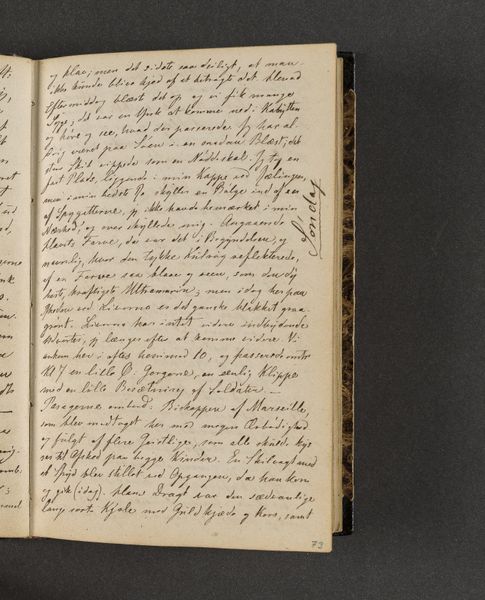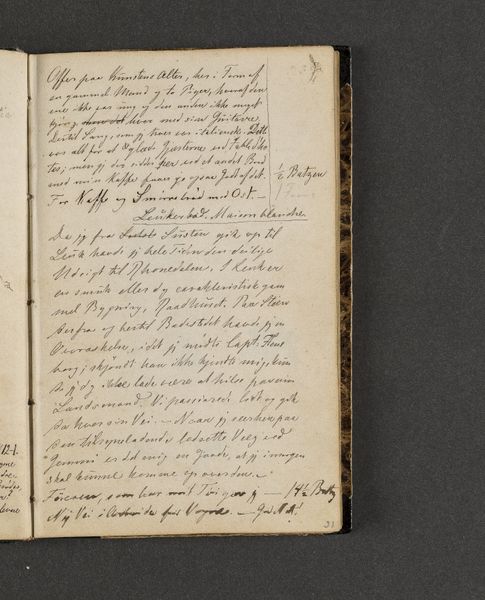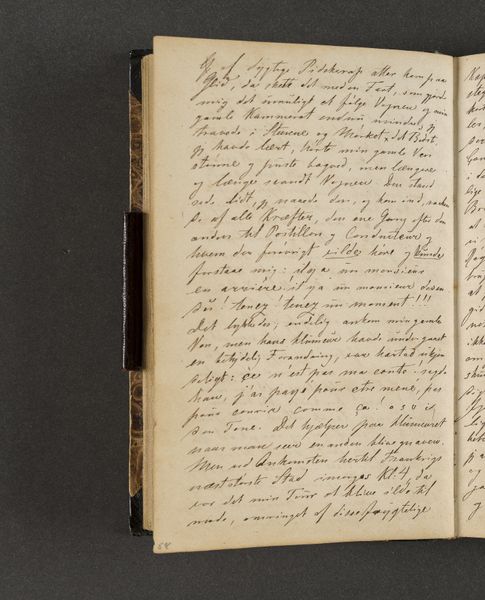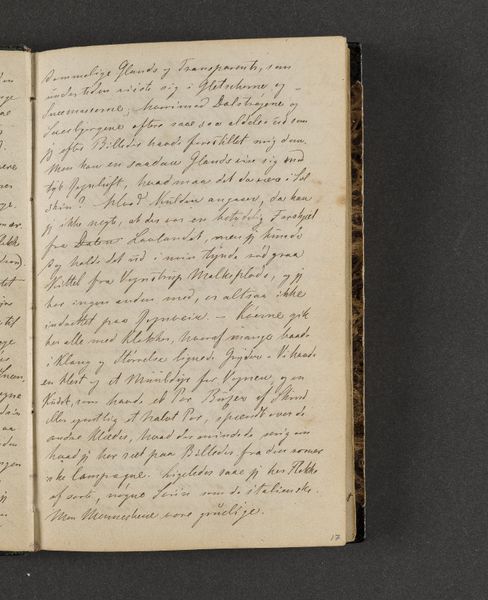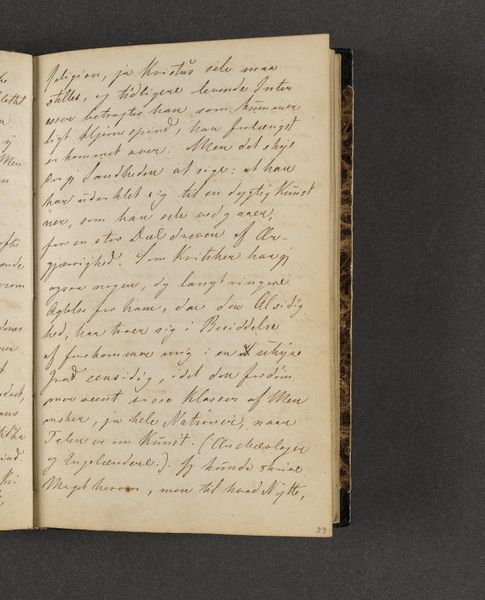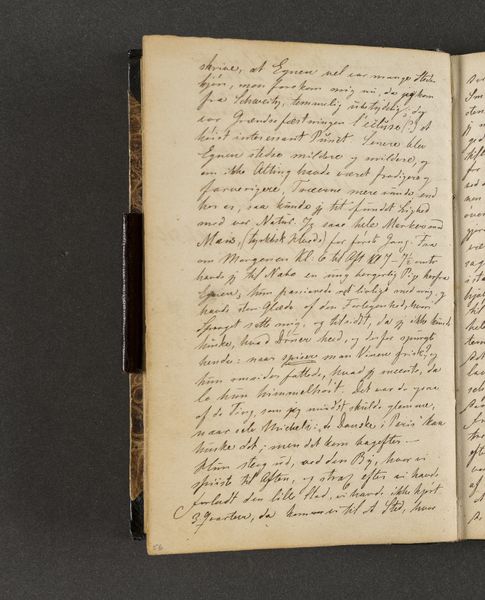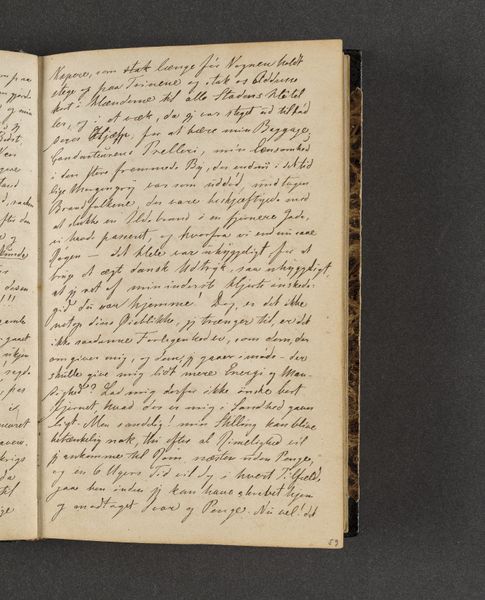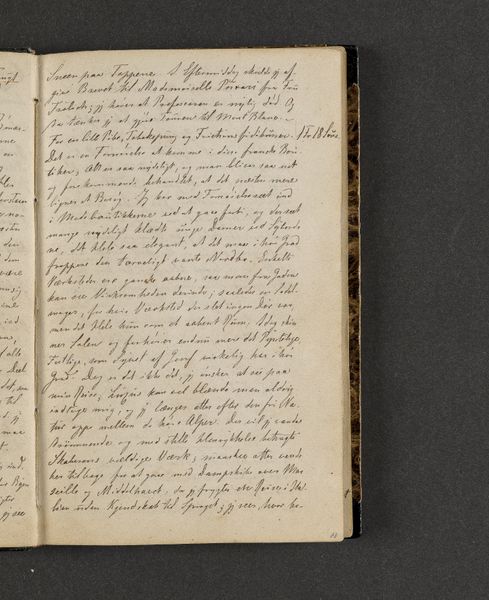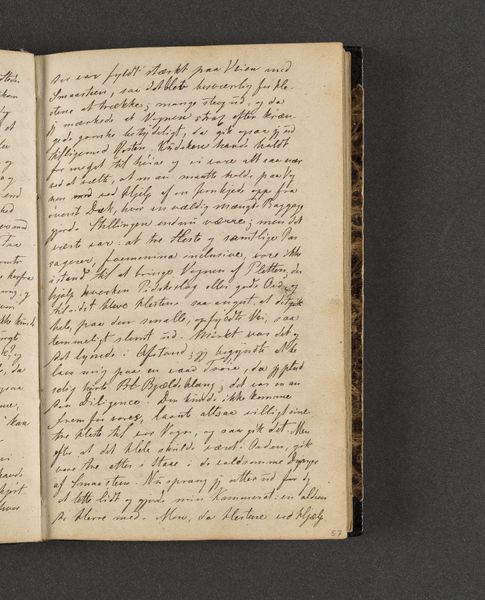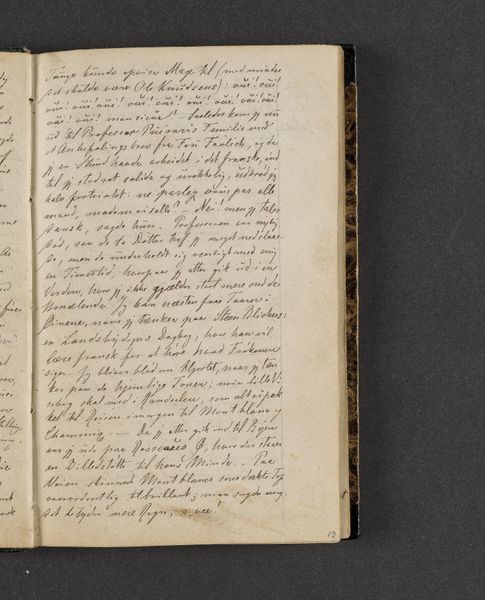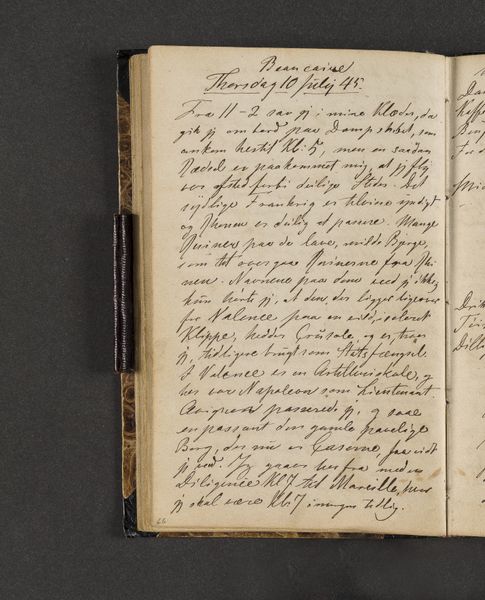
drawing, paper
#
drawing
#
narrative-art
#
paper
#
romanticism
Dimensions: 161 mm (height) x 103 mm (width) x 11 mm (depth) (monteringsmaal)
Editor: We’re looking at Johan Thomas Lundbye’s "Rejsedagbog," created around 1845. It appears to be a page from a travel journal, a drawing on paper. The handwritten text gives it such an intimate feel, like peering into a private moment. What strikes you most about it? Curator: For me, it's about understanding the materiality of the "Rejsedagbog". This isn't just a drawing; it’s a physical record of labor, travel, and the act of writing. What kind of paper was it made on? Was it locally sourced, or something purchased specifically for travel? Who produced the paper? These questions about the production process open up our understanding of Lundbye’s relationship with the world around him. Editor: I see your point! Thinking about the paper itself – where it came from, who made it – definitely shifts the focus. Curator: Absolutely. It moves us away from solely aesthetic considerations toward the material circumstances surrounding its creation. Furthermore, the ink itself—what was it made from? Was it portable and easy to prepare? The means of production inform the possibilities and limitations of the artwork itself, which is linked to Lundbye's social and economic circumstances. Is there any reference to how it was made, any personal annotation? Editor: I didn’t consider all those details. I was focused on the script. Seeing it as a product of specific materials and labour makes me appreciate it more. It seems obvious, but also new. Curator: Precisely! We learn that considering artistic creation through a material lens encourages a more critical approach.
Comments
No comments
Be the first to comment and join the conversation on the ultimate creative platform.

